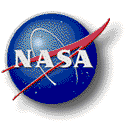Mon, May 13, 2013
Witnesses Outline Exoplanet Surveying And Research Conducted By NASA, NSF
The Subcommittees on Space and Research on Thursday explored current efforts to search for life-sustaining planets. Witnesses discussed the recent discovery by NASA’s Kepler space telescope of three super-Earth sized planets that have the potential to contain life.

“The search for exoplanets and Earth-like planets is a relatively new but inspiring area of space exploration. Scientists are discovering new kinds of solar systems in our own galaxy that we never knew existed," said House Science Committee chair Lamar Smith (R-TX) (pictured). "In the universe, is there another place like home? Because of NASA’s Kepler mission, we know the likely answer is yes. Imagine how the discovery of life outside our solar system would alter our priorities for space exploration and how we view our place in the universe.”
Witnesses outlined the state of exoplanet surveying and research at both NASA and the National Science Foundation (NSF), as well as coordination within the government and with external partners. In the search of exoplanets, NASA provides space-based telescopes to identify potential planets, while NSF builds ground-based telescopes. Both agencies fund research that assists in categorizing and characterizing candidate planets.

“As we strive to do more with less, I hope we will get a better understanding of how exoplanet research should adapt to the fiscal realities we face today," said Space Subcommittee Chairman Steven Palazzo (R-MS). "Is the current portfolio of missions and research still the ideal path under constrained budgets? How can we build upon recent inspirational discoveries in the most efficient manner? These are key questions we must answer as we work to draft a NASA Authorization Bill and a Reauthorization of COMPETES Act.”
The first confirmed exoplanet was discovered in 1992 by NSF-funded researchers. In 2010, the Keck Observatory announced it had identified the first Earth-sized planet orbiting a star in a “habitable zone,” where the planet’s distance from its sun could permit the existence of liquid water. On April 18, 2013, NASA’s Kepler mission released details of its discovery of three super-Earth sized planets in the habitable zone. These discoveries heightened speculation about the possibilities of finding life on another planet than Earth.

“Since humanity first began looking to the heavens, we have been fascinated by the possibility that we may not be alone in the universe," said Research Subcommittee Chairman Larry Bucshon (R-IN). "As the number of confirmed and cataloged heavenly bodies has swelled in the past twenty one years, we have sought to learn more about the conditions on these planets: the temperatures, the atmospheres, their core composition, how they orbit their respective stars, and ultimately, whether any are capable of sustaining life.”
Space Subcommittee Vice Chairman Mo Brooks (R-AL) added that NASA and the National Science Foundation have been instrumental in America’s exceptionalism in space exploration and discovery. "NASA’s discovery of three super-Earth sized planets is extraordinary," he said. "I look forward to exciting developments to come.”
More News
Circle To Runway (Runway Number) Used by ATC to inform the pilot that he/she must circle to land because the runway in use is other than the runway aligned with the instrument appr>[...]
Aero Linx: National Aviation Safety Foundation (NASF) The National Aviation Safety Foundation is a support group whose objective is to enhance aviation safety through educational p>[...]
At Altitude Of About 250-300 Ft Agl, The Airplane Experienced A Total Loss Of Engine Power On November 6, 2024, at 1600 central standard time, a De Havilland DHC-1, N420TD, was inv>[...]
From 2009 (YouTube Edition): Three Hour Flight Was 'Flawless' -- At Least, Until Mother Nature Intervened For anyone who loves the aviation business, this was a VERY good day. Afte>[...]
Also: AMA Names Tyler Dobbs, More Falcon 9 Ops, Firefly Launch Unsuccessful, Autonomous F-16s The Air Force has begun ground testing a future uncrewed jet design in a milestone tow>[...]
 ANN's Daily Aero-Term (05.05.25): Circle To Runway (Runway Number)
ANN's Daily Aero-Term (05.05.25): Circle To Runway (Runway Number) ANN's Daily Aero-Linx (05.05.25)
ANN's Daily Aero-Linx (05.05.25) NTSB Prelim: De Havilland DHC-1
NTSB Prelim: De Havilland DHC-1 Classic Aero-TV: The Boeing Dreamliner -- Historic First Flight Coverage
Classic Aero-TV: The Boeing Dreamliner -- Historic First Flight Coverage Airborne-NextGen 05.06.25: AF Uncrewed Fighters, Drones v Planes, Joby Crew Test
Airborne-NextGen 05.06.25: AF Uncrewed Fighters, Drones v Planes, Joby Crew Test





